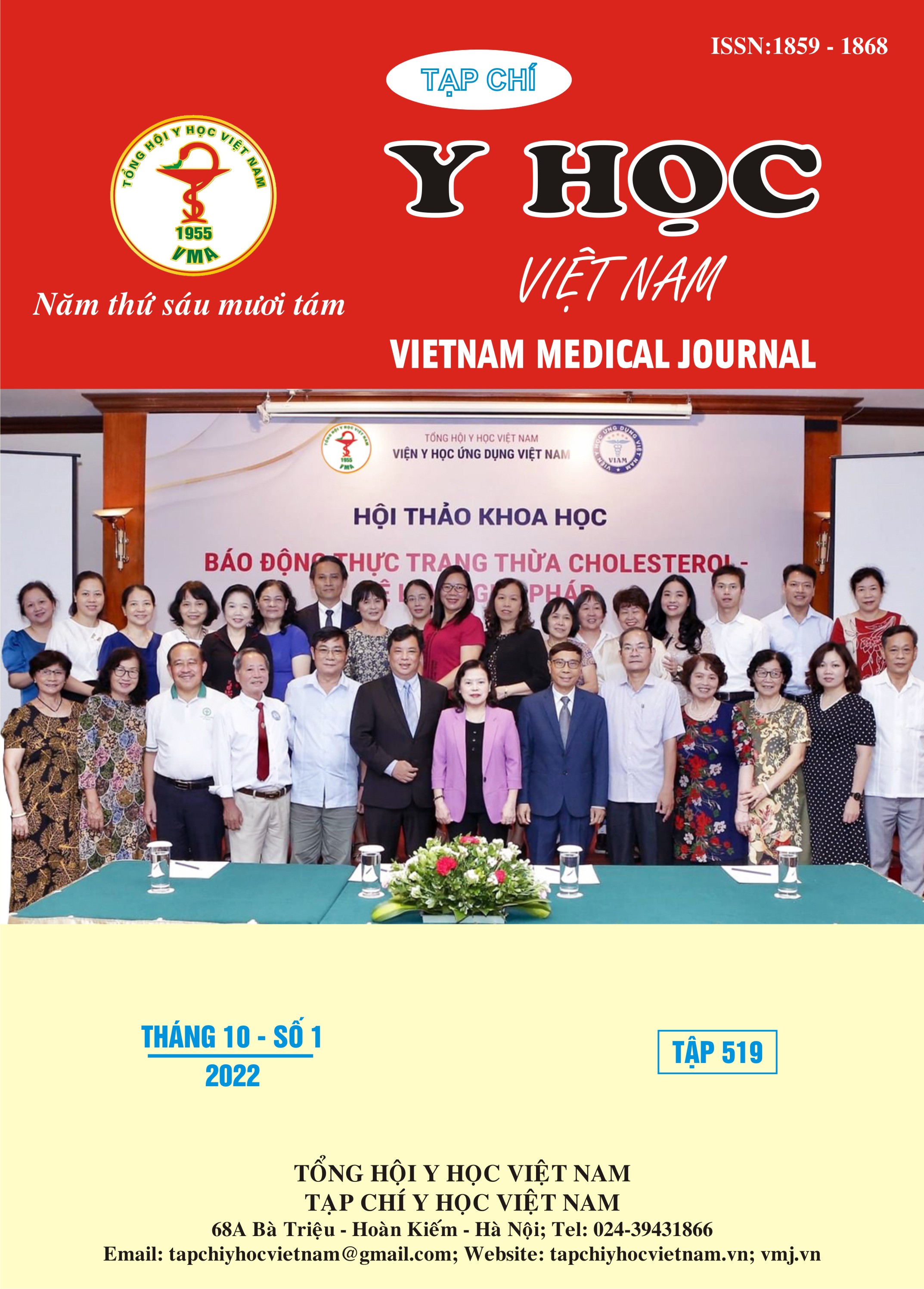EFFICACY OF NEOADJUVANT DOSE DENSE 4AC-4T REGIMEN IN BREAST CANCER AT HMUH
Main Article Content
Abstract
Objectives: Our study aims to describe the clinical and paraclinical characteristics of breast cancer patients and evaluate the treatment outcomes and toxicity of neoadjuvant dose dense 4AC- 4T regimen in this group. Patients and Methods: Retrospective and prospective, descriptive study on 42 patients with breast cancer, were treated with neoadjuvant dose dense 4AC-4T regimen at Hanoi Medical University Hospital. Results: The mean age was 46,5. The majority of them were in stage III (81%) while 19% patients were in stage II. 92,9% patients’s histology were invasive carcinoma of no special type (NST) and 50% was in grade III. After treatment, the complete clinical response rised from 11,9% (after 4 cycles of AC) to 38,1% (after 8 cycles of 4AC- 4T). No patient progressed during 8 cycles. All of our patients were moved to modified radical mastectomy after neoadjuvant chemotherapy. The pathological complete response (pCR) rate was 42,8%. Most adverse events were manageable and tolerable. The most common toxicity was neutropenia with grade 1,2. Non hematological toxicities such as vomiting, fatigue, alopecia and neurotoxity were also common and all of them were mild and moderate. Conclusion: Dose dense 4AC-4T regimen in neoadjuvant setting gives a high pCR rate with tolerable tocxicity, therefore this regimen can be widely used as neoadjuvant chemotherapy prior to surgery in our country, specilly with inoperable stage at initial diagnosis.
Article Details
Keywords
Breast cancer, neoadjuvant chemotherapy, dose dense 4AC-4T regimen
References
2. Guarneri V, Broglio K, Kau SW, et al. Prognostic value of pathologic complete response after primary chemotherapy in relation to hormone receptor status and other factors. J Clin Oncol. 2006;24(7):1037-1044. doi:10.1200/JCO.2005.02.6914
3. Hà Thành Kiên. Đánh Giá Kết Quả Hóa Trị Bổ Trợ Trước Phẫu Thuật Phác Đồ 4AC-4T Liều Dày Trên Bệnh Nhân Ung Thư vú Tại Bệnh Viện K. Luận văn thạc sỹ y học, Trường Đại học Y Hà Nội.; 2015.
4. Nguyễn Thị Thủy. Đánh giá kết quả hóa trị bổ trợ trước phác đồ 4AC-4T trên bệnh nhân ung thư vú giai đoạn III, Luận văn thạc sỹ y học, Trường Đại học Y Hà Nội. Published online 2016.
5. Hong WS, Jeon JY, Kang SY, et al. Comparison of neoadjuvant adriamycin and docetaxel versus adriamycin, cyclophosphamide followed by paclitaxel in patients with operable breast cancer. J Korean Surg Soc. 2013;85(1):7-14.
doi:10.4174/jkss.2013.85.1.7
6. Vriens BEPJ, Vriens IJH, Aarts MJB, et al. Improved survival for sequentially as opposed to concurrently delivered neoadjuvant chemotherapy in non-metastatic breast cancer. Breast Cancer Res Treat. 2017;165(3):593-600. doi:10.1007/s10549-017-4364-8
7. von Minckwitz G, Raab G, Caputo A, et al. Doxorubicin with cyclophosphamide followed by docetaxel every 21 days compared with doxorubicin and docetaxel every 14 days as preoperative treatment in operable breast cancer: the GEPARDUO study of the German Breast Group. J Clin Oncol. 2005;23(12):2676-2685.
doi:10.1200/JCO.2005.05.078
8. Untch M, Möbus V, Kuhn W, et al. Intensive dose-dense compared with conventionally scheduled preoperative chemotherapy for high-risk primary breast cancer. J Clin Oncol. 2009;27 (18):2938-2945. doi:10.1200/JCO.2008.20.3133


